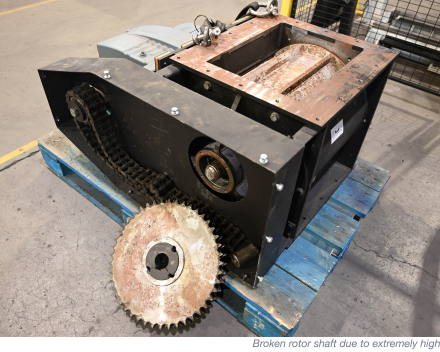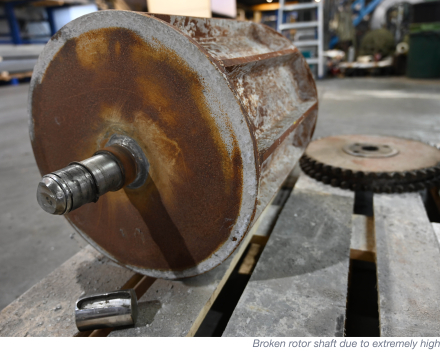- Home
- Newsletter
- Drive
Drive
11/06/2025 - 10:13
The right drive: slow, precise and reliable
When choosing a drive system, many people automatically think: the faster and more powerful, the better. But when it comes to operating a rotary valve, that’s exactly the wrong approach. An improperly selected drive can even lead to performance loss or damage. In this article, we delve into why speed and torque must be chosen carefully, and explore the differences between direct and indirect drives.
Speed: Less Is More
A rotary valve doesn't rely on speed—it relies on precision. The faster a rotary valve turns, the more unintended air is displaced from bottom to top. This significantly increases pressure loss within the system.
➡️ A stationary valve provides maximum sealing.
➡️ A valve turning too quickly loses its sealing capability.
The optimal rotation speed ensures:
- Maximum efficiency of the entire system
- Reduced wear and a longer service life for the valve
- Better chamber filling, resulting in fewer air vortices and less mechanical stress
Torque over Power
When choosing the drive, it’s not about the motor’s power, but the required torque. The torque must be sufficient to overcome the rotor’s seals and to facilitate the transport of the product through the rotor.
BUT... too much torque is dangerous.
If the torque exceeds what the rotor mechanics can handle, it can lead to shaft breakage or other structural damage.
Therefore, the service factor (the ratio between the maximum allowable torque and the applied torque) must be greater than 1. This way, the drive acts as a protection against breakage.
Direct vs. Indirect Drive
When setting up a rotary valve installation, there are two options:
Direct drive: the motor-reducer is mounted directly on the rotor
- ✅ Advantages: compact design – low maintenance – no chain, therefore safer
- ❗️Note: requires very precise alignment. Incorrect installation can lead to shaft breakage.
Indirect drive: the motor and rotor are connected via sprockets and a chain
- ✅ Advantages: mechanical decoupling of heat and magnetism – more flexibility in placement
- ❗️Note: higher wear and risk of unsafe situations. A sturdy chain guard is therefore essential.
Conclusion
The choice of a rotary valve drive must be carefully matched to speed, torque, and mounting type. Too much power or speed does not improve results but increases the risk of damage and wear. By choosing a customized, controlled drive—whether direct or indirect—you ensure the durability, safety and efficiency of your installation.


